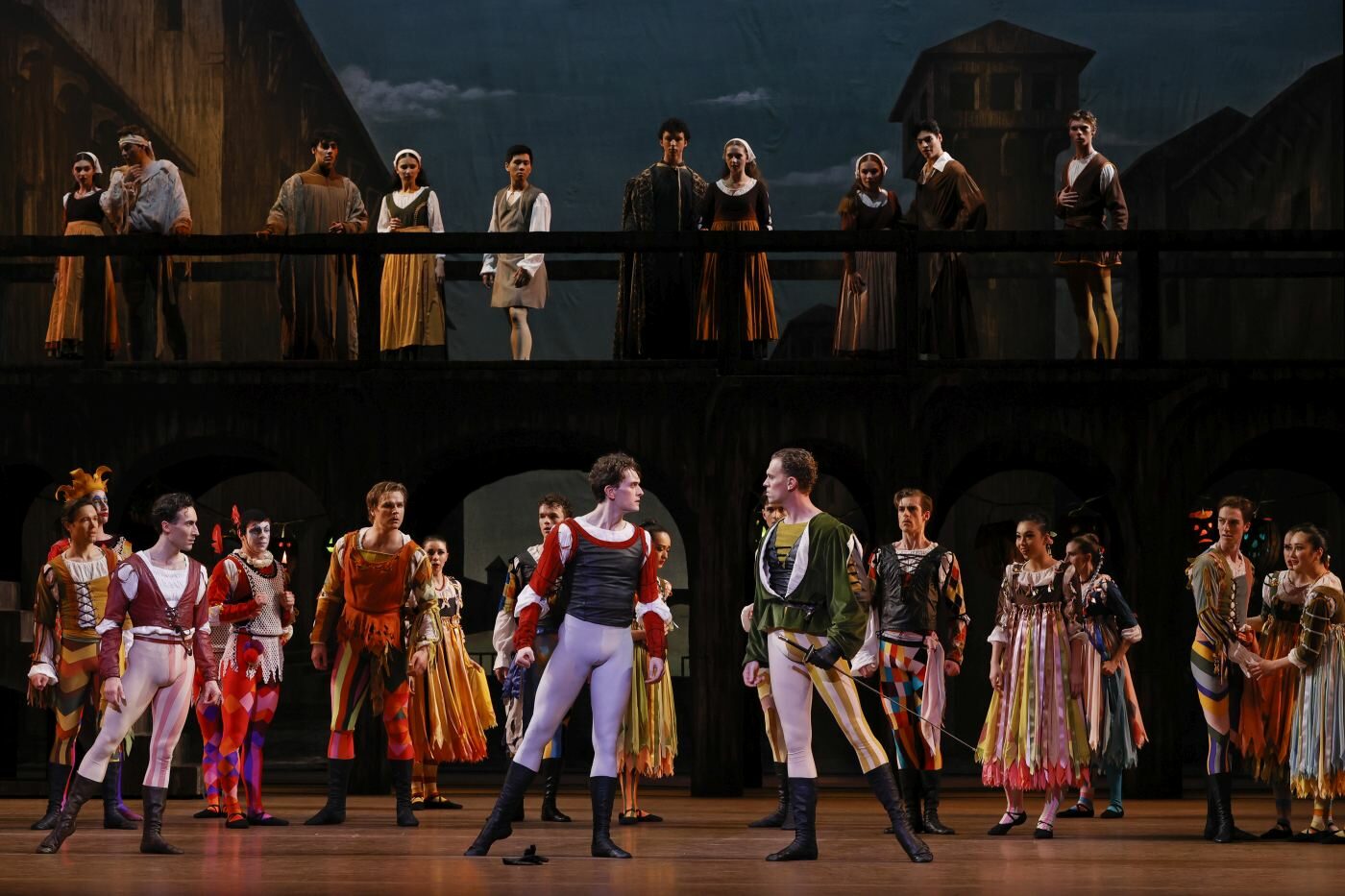True to Himself
Jiří Jelínek
Gelsenkirchen, Germany
November, 2015
by Ilona Landgraf
Copyright © 2015 by Ilona Landgraf
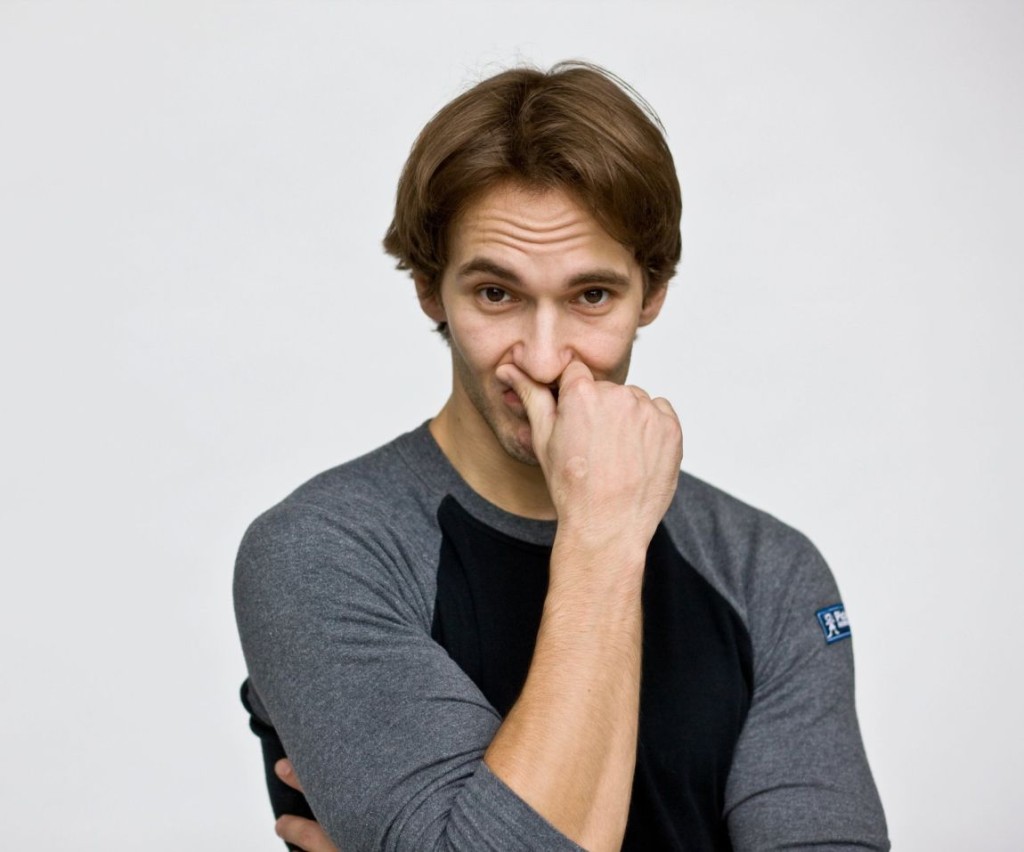 Jiří Jelínek’s dance career has been a journey. Born and trained in Prague he literally danced at the other end of the world, that is in Australia. Crisscrossing the world he gained invaluable experience with various companies and diverse repertories. Recently he danced with the Ballett im Revier in Gelsenkirchen, Germany. I took the rare opportunity to meet him the day after his last show in a café in Gelsenkirchen to talk about his career and his life.
Jiří Jelínek’s dance career has been a journey. Born and trained in Prague he literally danced at the other end of the world, that is in Australia. Crisscrossing the world he gained invaluable experience with various companies and diverse repertories. Recently he danced with the Ballett im Revier in Gelsenkirchen, Germany. I took the rare opportunity to meet him the day after his last show in a café in Gelsenkirchen to talk about his career and his life.
Jelínek started to dance at the age of seven. A boy full of energy, he loved to move; he was very often outside, running around, playing and quarreling with his friends. The dance lessons in a children’s group was one hobby of several. “Then, when I was ten years old my mother urged me to audition for the Dance Conservatory in Prague. They took me and in the following four years I learned the basics.”
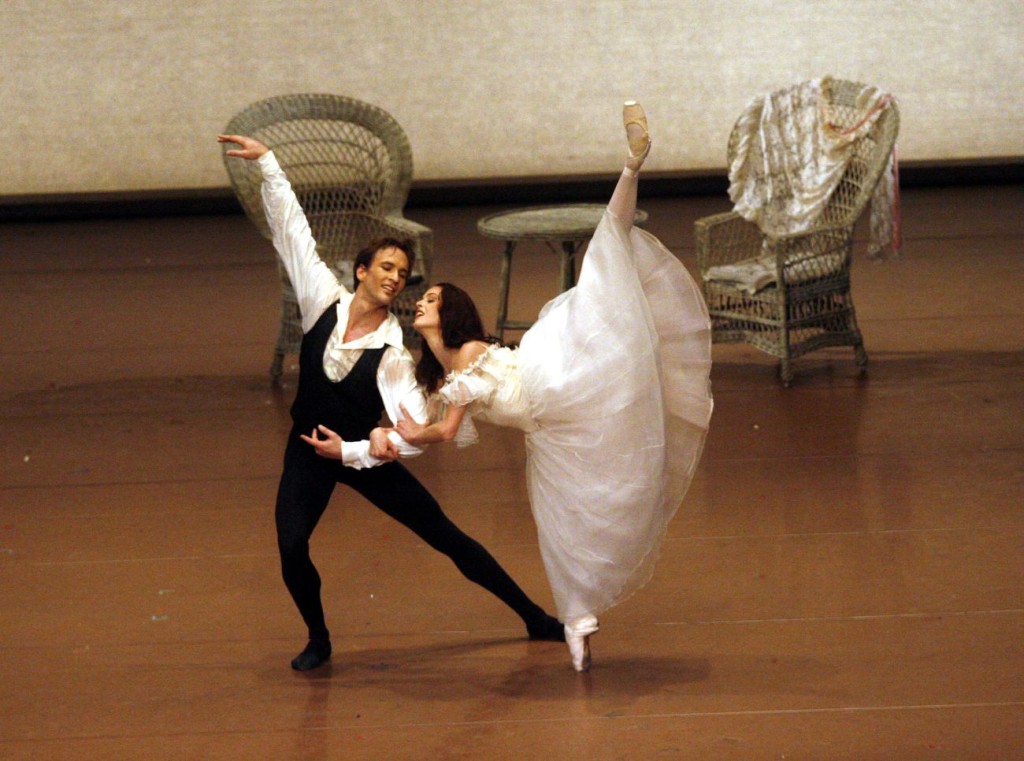 Otto and Jiří Bubeníček, also graduates of Prague’s Dance Conservatory, are three years older than Jelínek. They became one source of motivation. “After four or five years, when the second period of my training began, things got more serious for me. I watched Otto and Jiří and also other older students and found them really good. They inspired me. And, realizing that within around three years I had to look for a job, I was spurred to work hard.”
Otto and Jiří Bubeníček, also graduates of Prague’s Dance Conservatory, are three years older than Jelínek. They became one source of motivation. “After four or five years, when the second period of my training began, things got more serious for me. I watched Otto and Jiří and also other older students and found them really good. They inspired me. And, realizing that within around three years I had to look for a job, I was spurred to work hard.”
Jelínek took over responsibility for his path. Presumably that was a basic and defining decision because he couldn’t safely rely on being supported by his parents. Their marriage broke up when he was seven but they continued living under the same roof for some years. “Arguments and yelling often were the order of the day. I preferred to be outside. My grandmother and my older brother looked after me and often also my sister. But at that time I wouldn’t listen to anything my mother, my father or my brother said.” Several years later Jelínek’s mother developed cancer. She died after three years of suffering. Jelínek was seventeen at that time. The pictures of his mother being gradually ravaged by disease still stick in his mind.
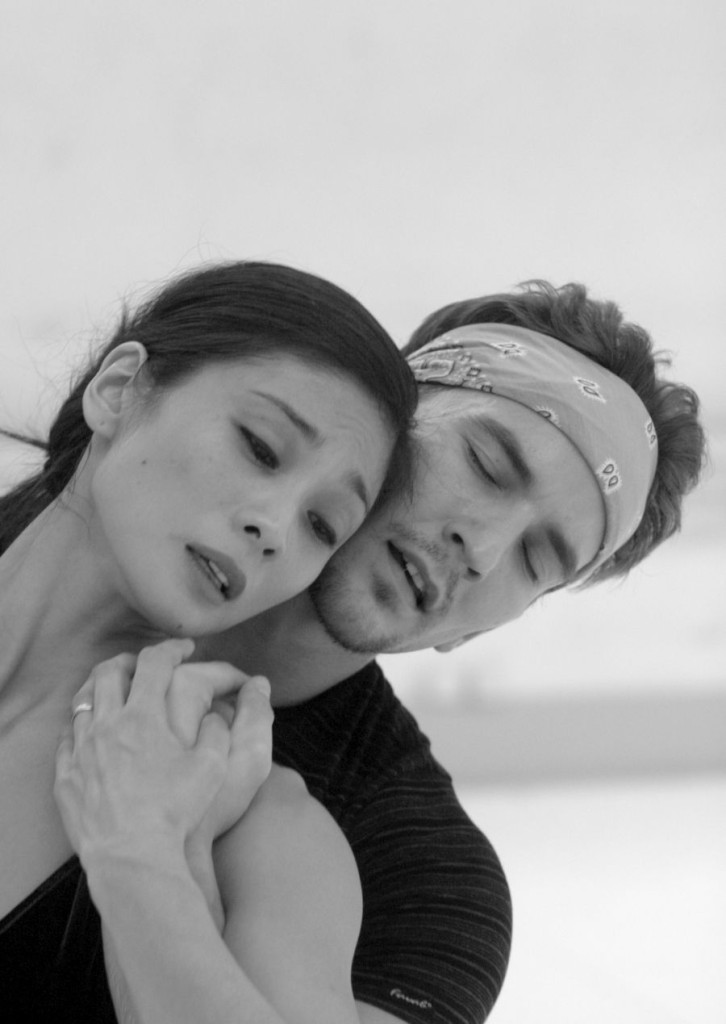
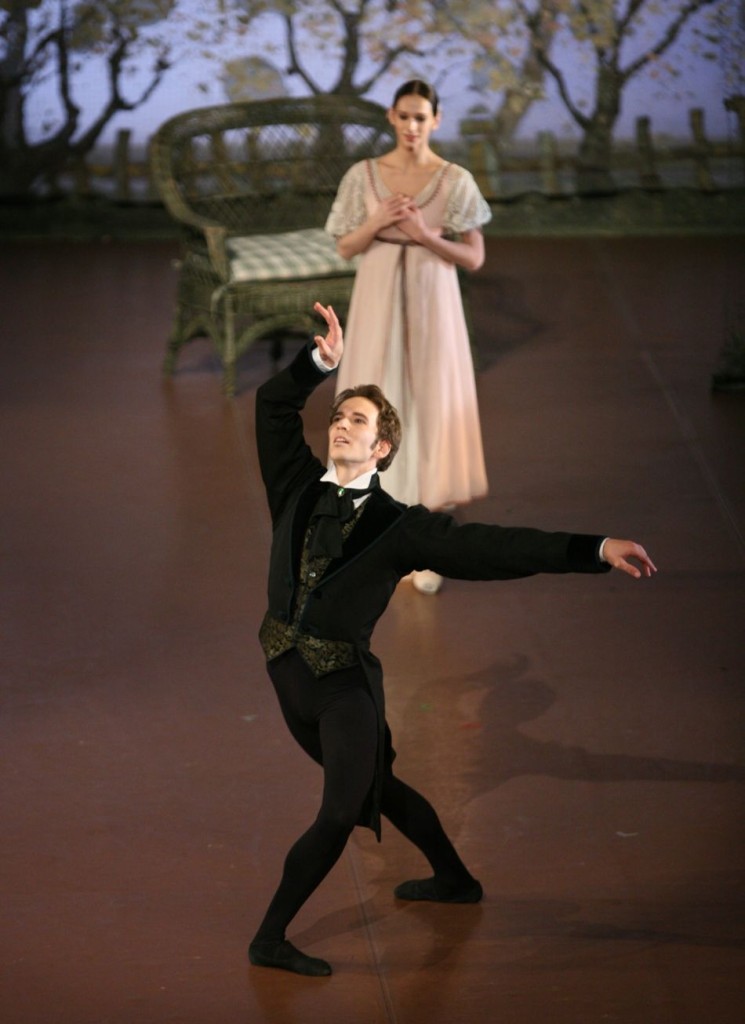 “The death of my mother was the biggest impact causing me to push forward.” From then on his energy went entirely into dance. His ballet teacher, Lubos Hajn, provided him with solid training. As a result Jelínek was more and more cast for solos at school performances. After his graduation in 1996 he readily accepted a scholarship at the School of the Hamburg Ballet. Getting the opportunity to work with Anatoli Nisnevich, a highly-esteemed Russian ballet teacher, attracted him. Jelínek was eager to refine his technique. It proved to have been a very good decision. Nine months of intense work with Nisnevich were equivalent to two or three years regular training.
“The death of my mother was the biggest impact causing me to push forward.” From then on his energy went entirely into dance. His ballet teacher, Lubos Hajn, provided him with solid training. As a result Jelínek was more and more cast for solos at school performances. After his graduation in 1996 he readily accepted a scholarship at the School of the Hamburg Ballet. Getting the opportunity to work with Anatoli Nisnevich, a highly-esteemed Russian ballet teacher, attracted him. Jelínek was eager to refine his technique. It proved to have been a very good decision. Nine months of intense work with Nisnevich were equivalent to two or three years regular training.
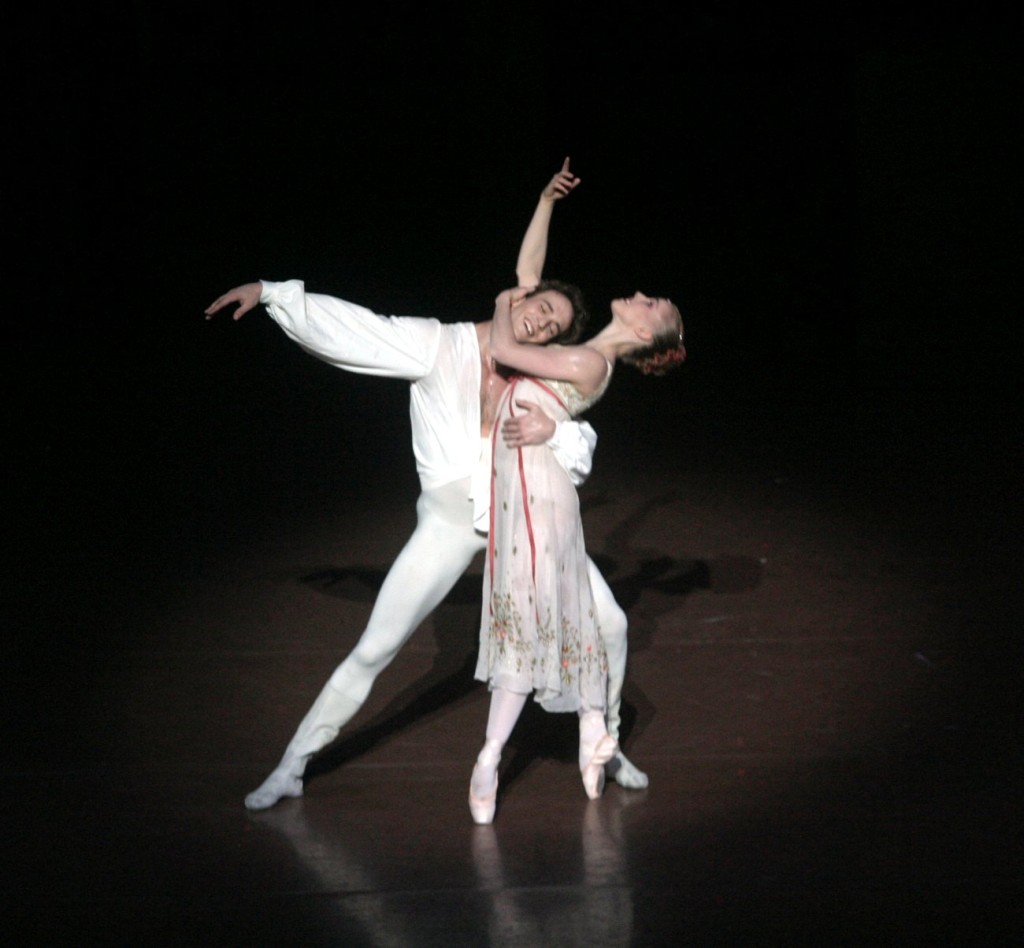 In spring 1997, even before the one-year scholarship was over, the Semperoper Ballet Dresden called Jelínek. “I had previously auditioned in Dresden and was supposed to join the company after the summer break. But being in need of dancers, they now asked if I was ready to start earlier.” John Neumeier, the school’s director, and Nisnevich advised him to accept. “You already learnt everything I could teach you” Nisnevich noted.
At that time Vladimir Derevianko was at the helm of the Semperoper Ballet. But, after arriving in Dresden, things didn’t turn out as anticipated. “They had pulled me away from school in Hamburg but gave me no normal contract. Only a guest contract, which was only enough to pay the rent. So the moment I started I increasingly ran into debts. I had to borrow money from my grandparents but after two months the situation had become unacceptable. The atmosphere in the company wasn’t comfortable either. And I started to have problems with my knees, which led me back to Prague to seek medical treatment.
In spring 1997, even before the one-year scholarship was over, the Semperoper Ballet Dresden called Jelínek. “I had previously auditioned in Dresden and was supposed to join the company after the summer break. But being in need of dancers, they now asked if I was ready to start earlier.” John Neumeier, the school’s director, and Nisnevich advised him to accept. “You already learnt everything I could teach you” Nisnevich noted.
At that time Vladimir Derevianko was at the helm of the Semperoper Ballet. But, after arriving in Dresden, things didn’t turn out as anticipated. “They had pulled me away from school in Hamburg but gave me no normal contract. Only a guest contract, which was only enough to pay the rent. So the moment I started I increasingly ran into debts. I had to borrow money from my grandparents but after two months the situation had become unacceptable. The atmosphere in the company wasn’t comfortable either. And I started to have problems with my knees, which led me back to Prague to seek medical treatment.
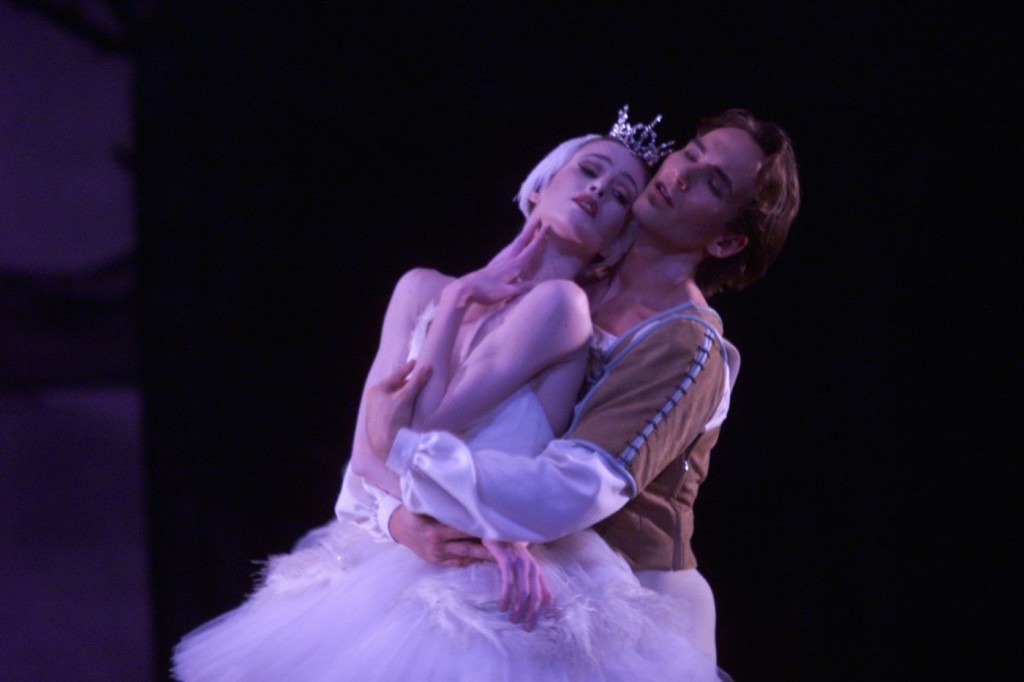 After two and a half months while again on a brief stay in Prague, Jelinek met Vlastimil Harapes by accident. Harapes then was artistic director of Prague’s National Theatre Ballet. Hearing of Jelínek’s dissatisfaction and his situation in Dresden, he spontaneously offered him a soloist contract with the company. Jelínek agreed, quit in Dresden and from 1997 on danced at the top of the roster. “After four years my name was publicly recognized; I felt I was being put on a pedestal. But when guest dancers from outside came round to dance at galas, or when I saw Jiří and Otto for example, I learned that the level of dance abroad was far and away superior to ours in Prague. I wanted to likewise grow artistically, If I am already in ballet I want to dance the best way I am able to, the best ballets I can do on the best stages. Hence I decided to leave the Czech Republic. I auditioned for Stuttgart Ballet and – and that is something no one in Prague understood – I went back into the corps de ballet.”
After two and a half months while again on a brief stay in Prague, Jelinek met Vlastimil Harapes by accident. Harapes then was artistic director of Prague’s National Theatre Ballet. Hearing of Jelínek’s dissatisfaction and his situation in Dresden, he spontaneously offered him a soloist contract with the company. Jelínek agreed, quit in Dresden and from 1997 on danced at the top of the roster. “After four years my name was publicly recognized; I felt I was being put on a pedestal. But when guest dancers from outside came round to dance at galas, or when I saw Jiří and Otto for example, I learned that the level of dance abroad was far and away superior to ours in Prague. I wanted to likewise grow artistically, If I am already in ballet I want to dance the best way I am able to, the best ballets I can do on the best stages. Hence I decided to leave the Czech Republic. I auditioned for Stuttgart Ballet and – and that is something no one in Prague understood – I went back into the corps de ballet.”
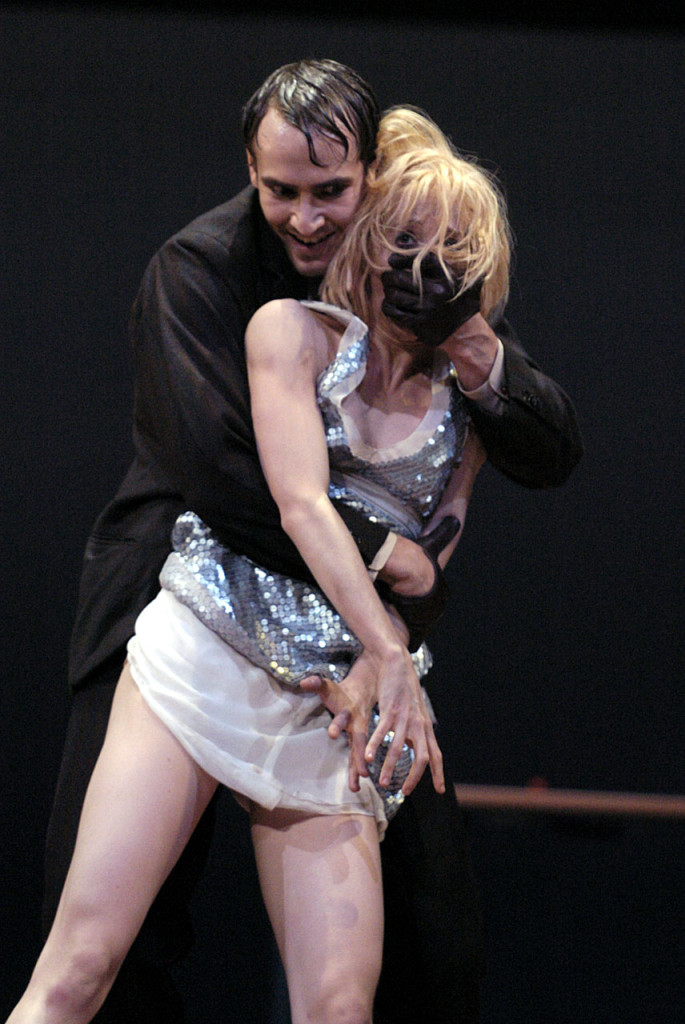
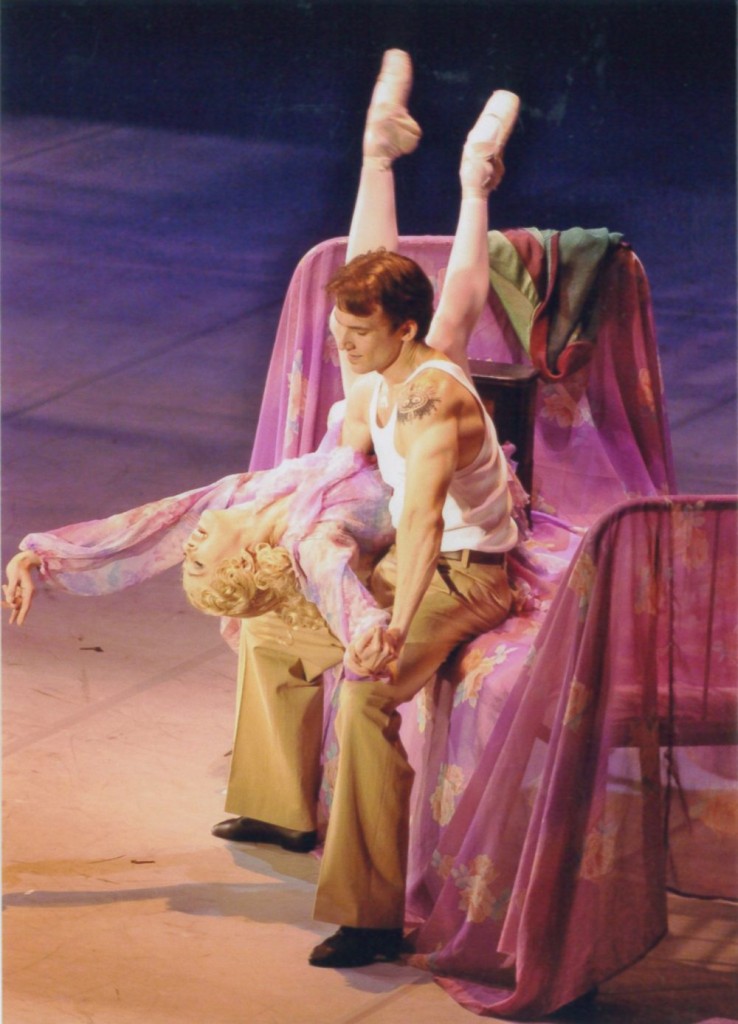 There he was in good company; Jason Reilly, Marijn Rademaker, Evan McKie and Friedemann Vogel at that time also were in the corps. Robert Tewsley was a soloist, Vladimir Malakhov often guested with the company.
Soon Jelínek danced demi-solos and climbed the ranks swiftly. In 2003 he became soloist, one year later he was promoted to principal. “I had a really good time in Stuttgart. There was a strong Russian ballet mistress, Valentina Savina. She later moved to Berlin. She was Reid’s [Reid Anderson’s] right hand and had substantial influence on who would dance what and when. You had to be ready; you had to deserve to be on stage. For her the quality of the performance had top priority. It wasn’t just that one could do it, instead she sent one on stage only if he or she was ready to give a great performance. This I absolutely respected.” In his repertory were leading roles in ballets by John Cranko, George Balanchine, John Neumeier, Jiří Kylían, Hans van Manen or Glen Tetley.
There he was in good company; Jason Reilly, Marijn Rademaker, Evan McKie and Friedemann Vogel at that time also were in the corps. Robert Tewsley was a soloist, Vladimir Malakhov often guested with the company.
Soon Jelínek danced demi-solos and climbed the ranks swiftly. In 2003 he became soloist, one year later he was promoted to principal. “I had a really good time in Stuttgart. There was a strong Russian ballet mistress, Valentina Savina. She later moved to Berlin. She was Reid’s [Reid Anderson’s] right hand and had substantial influence on who would dance what and when. You had to be ready; you had to deserve to be on stage. For her the quality of the performance had top priority. It wasn’t just that one could do it, instead she sent one on stage only if he or she was ready to give a great performance. This I absolutely respected.” In his repertory were leading roles in ballets by John Cranko, George Balanchine, John Neumeier, Jiří Kylían, Hans van Manen or Glen Tetley.
Jelínek describes himself as a very emotional and sensitive person. “I’m sensitive towards the atmosphere within a group. I soak up energy like a sponge. Hence I want to feel comfortable in a company. Especially as being a dancer is a hard job. From a certain age on one actually is constantly in pain.”
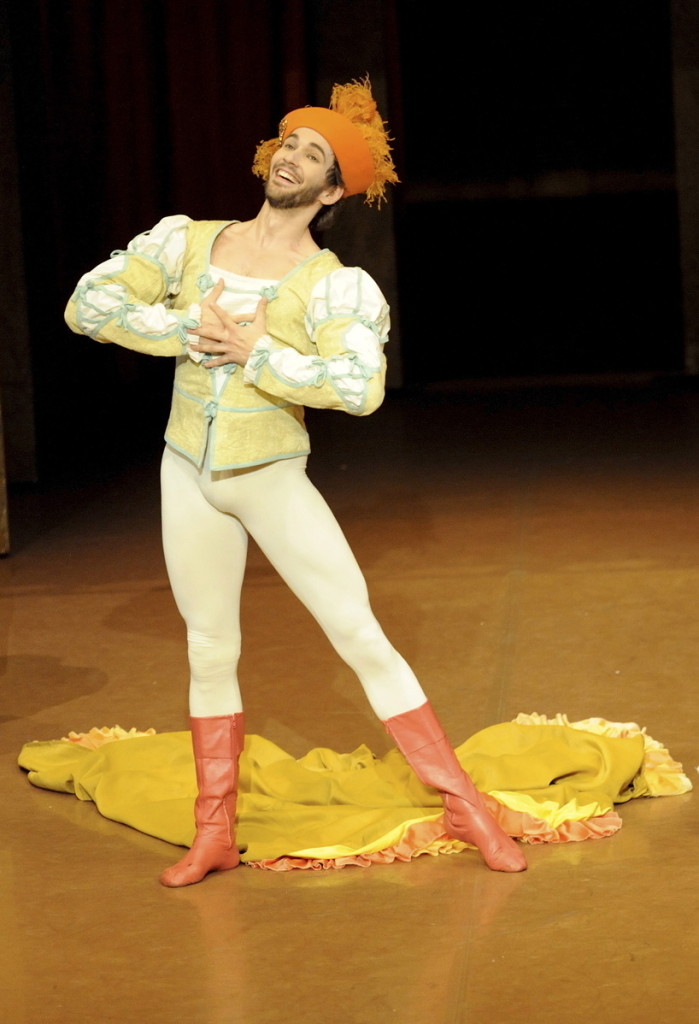 In 2010 it became evident that time for a change had come. He also needed to move on in his private life. Jelínek left Stuttgart and joined the National Ballet of Canada. “Looking back I’m really happy about this decision. I met a lot of interesting people in Toronto, especially outside the theater. I found good friends and started to look on the world with different eyes.” Generally most of his friends come from outside the theater. “Piotr Stanczyk, a principal in Toronto became a good friend of mine and also Andrei Streliaev, the company’s pianist. But usually there is too much competition, insecurity and gossip within a company to establish real friendships. I am honest. I speak my mind. Often, my energy says a lot too. Not everyone likes that.”
In 2010 it became evident that time for a change had come. He also needed to move on in his private life. Jelínek left Stuttgart and joined the National Ballet of Canada. “Looking back I’m really happy about this decision. I met a lot of interesting people in Toronto, especially outside the theater. I found good friends and started to look on the world with different eyes.” Generally most of his friends come from outside the theater. “Piotr Stanczyk, a principal in Toronto became a good friend of mine and also Andrei Streliaev, the company’s pianist. But usually there is too much competition, insecurity and gossip within a company to establish real friendships. I am honest. I speak my mind. Often, my energy says a lot too. Not everyone likes that.”
He doesn’t make a secret of things which didn’t run smoothly behind the scenes: “Companies love to talk of themselves as of a family. In Toronto the long-standing members of the ensemble built something of a family but I wasn’t part of that core group. Actually I neither wished to nor was interested in. In fact during the three and a half years I was there quite a few people never even said ‘hello’ to me. Some even kept avoiding eye-contact! And that not only happened to me but also to several others, dancers from abroad. It was ridiculous.” At the beginning, when in specific situations it became obvious, that someone intentionally ignored me or was rude, I was even getting offended. Those people aren’t 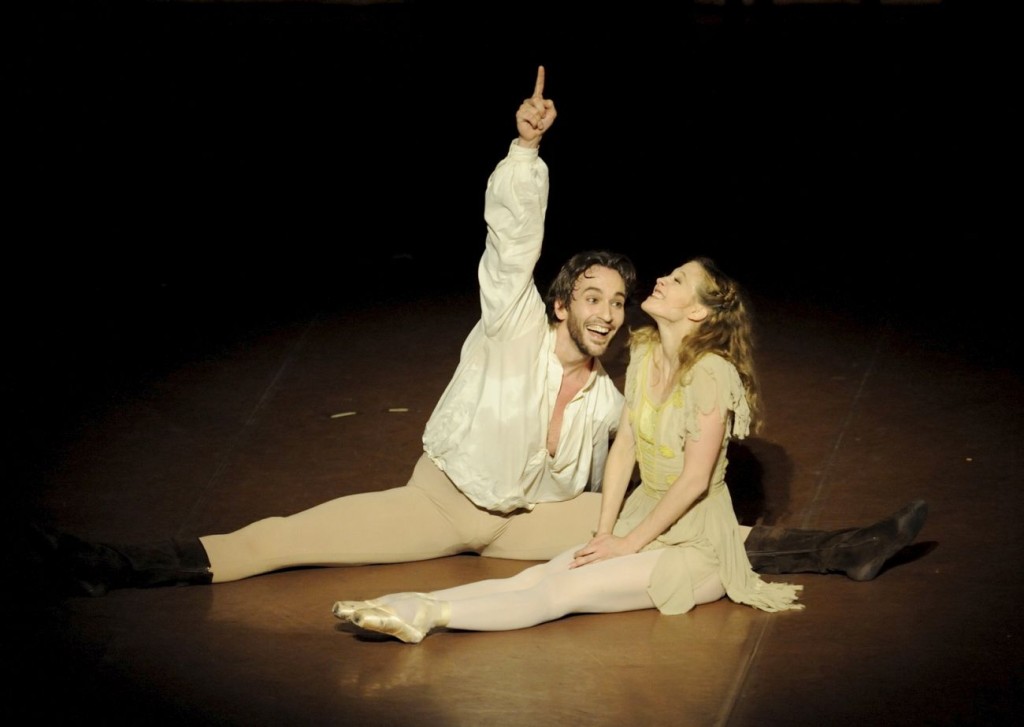 four-year-olds, not knowing what they do. But regardless if one is aware of what she or he is doing or not doesn’t change the fact. Anyway. Soon I realized that this was due to individual issues rather than my problem. And I neither have the energy for dealing with such childish behavior nor do I want to waste my energy on being irritated by it.
four-year-olds, not knowing what they do. But regardless if one is aware of what she or he is doing or not doesn’t change the fact. Anyway. Soon I realized that this was due to individual issues rather than my problem. And I neither have the energy for dealing with such childish behavior nor do I want to waste my energy on being irritated by it.
At least Jelínek’s repertory offered some counterbalance. Amongst others he worked with James Kudelka, Alexei Ratmansky, Christopher Wheeldon and Wayne McGregor. But, after an injury in his second season, he felt he was being gradually put in the second line. Main roles were mostly given to others, except when guest choreographers like, for example, John Neumeier worked with the company. Then Jelínek was cast for the leading roles. He talked about it with Karen Kain, National Ballet of Canada’s artistic director, but she preferred “her dancers and wanted to realize her plans with the company. So I wasn’t needed any more.”
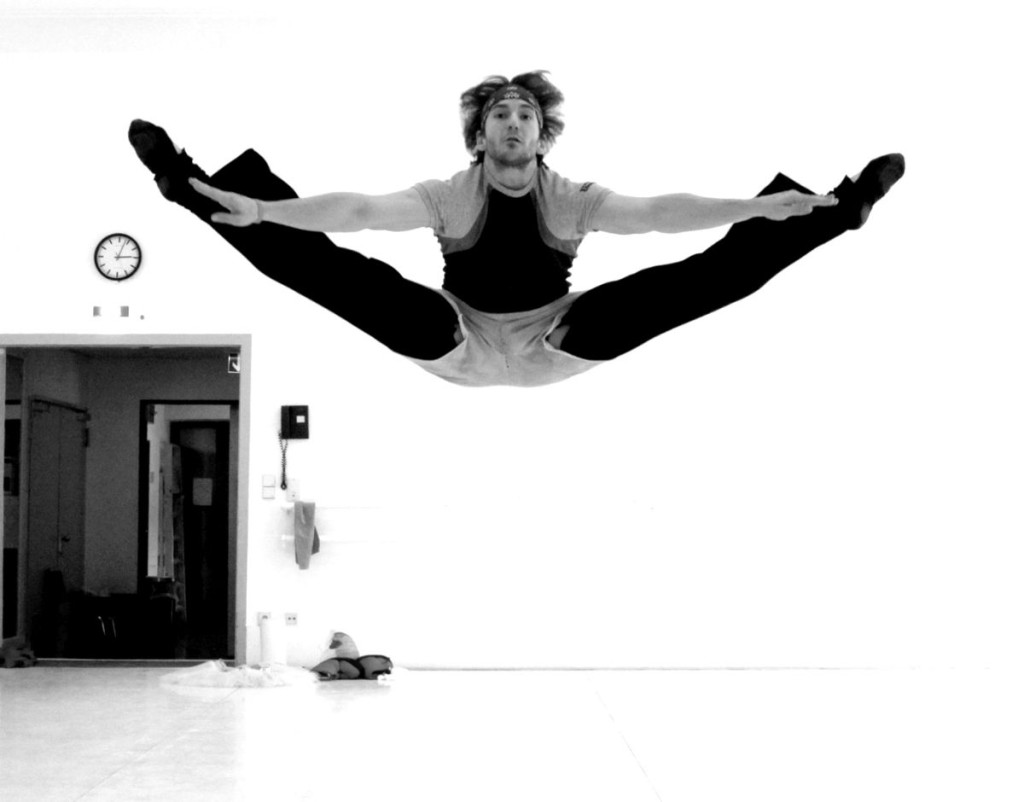 It was time again to move. Coincidentally, a friend heard of Jelínek’s plan to leave Canada. He suggested getting in touch with the West Australian Ballet in Perth, which was looking for principals. “I also received an e-mail from Mikko Nissinen, Boston Ballet’s artistic director. He was interested in having me in Boston but I didn’t feel like living in the USA, so I thought, wow, great! I had always wanted to go to Australia. The culture and the nature, especially the beaches, fascinates me.”
It was time again to move. Coincidentally, a friend heard of Jelínek’s plan to leave Canada. He suggested getting in touch with the West Australian Ballet in Perth, which was looking for principals. “I also received an e-mail from Mikko Nissinen, Boston Ballet’s artistic director. He was interested in having me in Boston but I didn’t feel like living in the USA, so I thought, wow, great! I had always wanted to go to Australia. The culture and the nature, especially the beaches, fascinates me.”
Indeed Jelínek was offered a contract and, together with Jaime Reid, his Canadian girlfriend, also a dancer, he moved to Perth. More precisely to a spot a forty minute travel away from Perth. “Actually we lived on the beach. We could see and hear the ocean from our bedroom. It was amazing! Seriously, this was the best part of living in Australia. We also quite often traveled through the country, spent almost a month in New Zealand and also visited Indonesia. In that respect I really had a great time. But after about half a year I realized that I missed something going on. Around Perth there is the beach, everything else is desert. That’s it. After the show the restaurants are already closed, at the weekends the shops already close at 5pm. No one comes round to Australia to visit you because the flight takes ages. You are disconnected from the rest of the world.”
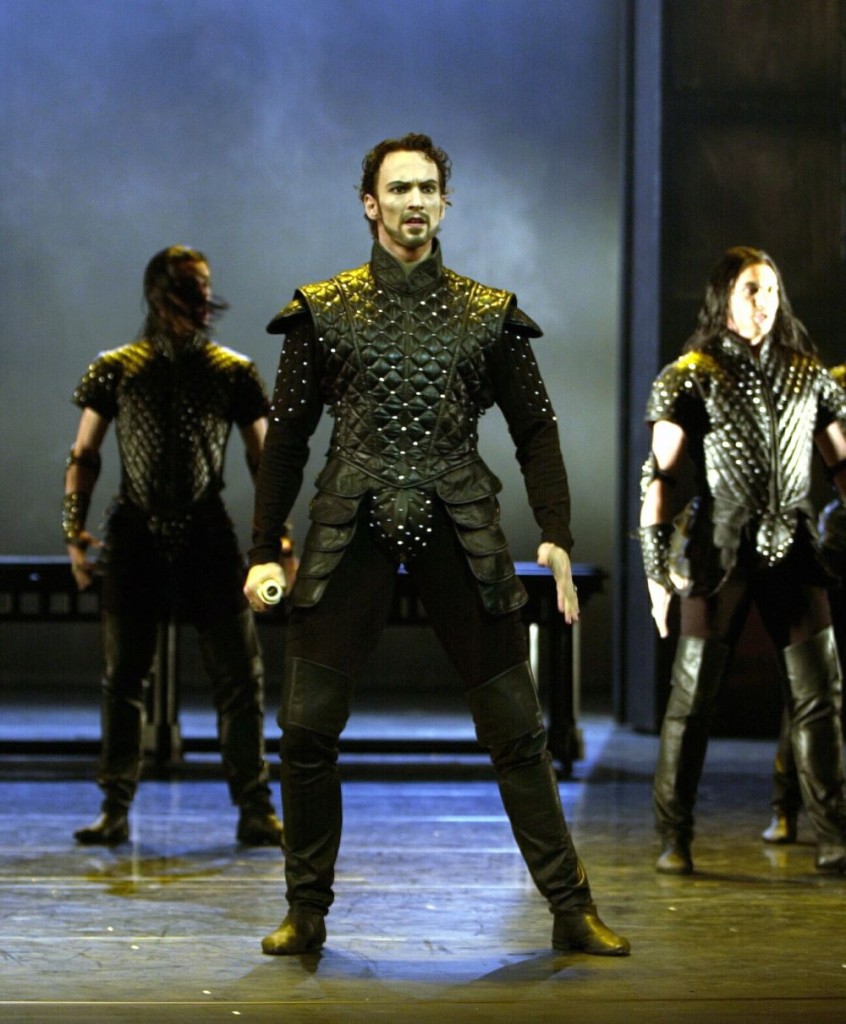 Also elsewhere there was a spanner in the works. Though things had looked differently at first, Aurélien Scannella, artistic director of the West Australian Ballet, didn’t offer Jelínek’s girlfriend a place in the company. “For a dancer it is difficult to work in Perth if you are not in the West Australian Ballet. Jaime started to teach in private ballet schools and she had the opportunity to train with the company but that was only an interim solution. One has to perform. Jelínek talked several times with Scannella but his words didn’t fall on sympathetic ears. “I didn’t ask for a job for her only because I’m in love with her. I judge her talent realistically and she definitely was good enough to dance in the West Australian Ballet. Today she is dancing with the Béjart Ballet.” Ultimately both saw no option but to leave. Sadly the moment the news of Jelínek’s decision spread Scannella was less interested in being on good terms with him any longer.
Also elsewhere there was a spanner in the works. Though things had looked differently at first, Aurélien Scannella, artistic director of the West Australian Ballet, didn’t offer Jelínek’s girlfriend a place in the company. “For a dancer it is difficult to work in Perth if you are not in the West Australian Ballet. Jaime started to teach in private ballet schools and she had the opportunity to train with the company but that was only an interim solution. One has to perform. Jelínek talked several times with Scannella but his words didn’t fall on sympathetic ears. “I didn’t ask for a job for her only because I’m in love with her. I judge her talent realistically and she definitely was good enough to dance in the West Australian Ballet. Today she is dancing with the Béjart Ballet.” Ultimately both saw no option but to leave. Sadly the moment the news of Jelínek’s decision spread Scannella was less interested in being on good terms with him any longer.
But again fortuity came to Jelínek’s assistance. Some month before he had left Toronto he had seen a performance of Boris Eifman’s company which at that time was touring Canada. “I saw ‘Rodin’, which I believe is one of Eifman’s best pieces. It is very theatrical and dramatic and has nice music too. I was totally blown away by it. It is no classical piece; everything is danced turned in. And that later turned out to become a major issue for me… At the ‘Rodin’ show I met a lot of people in the audience who know what kind of artist I am. And during the break three of them at a time suggested I should join the Eifman Ballet. It would be exactly the company I fit into. That made me start to think.”
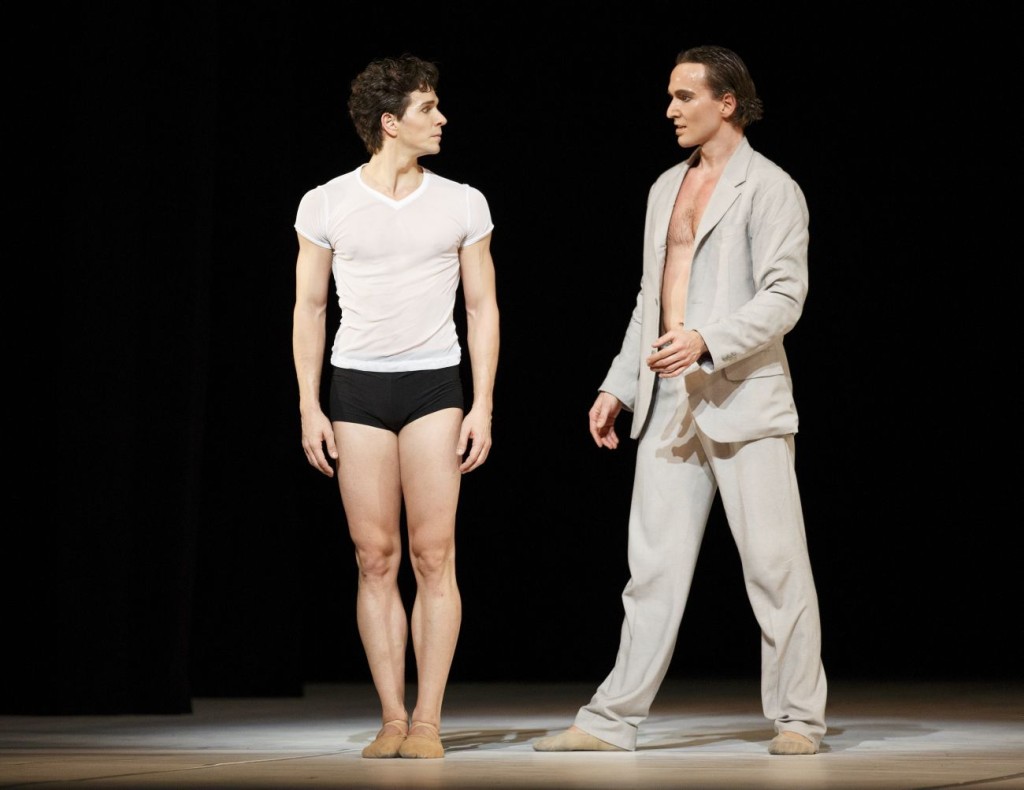
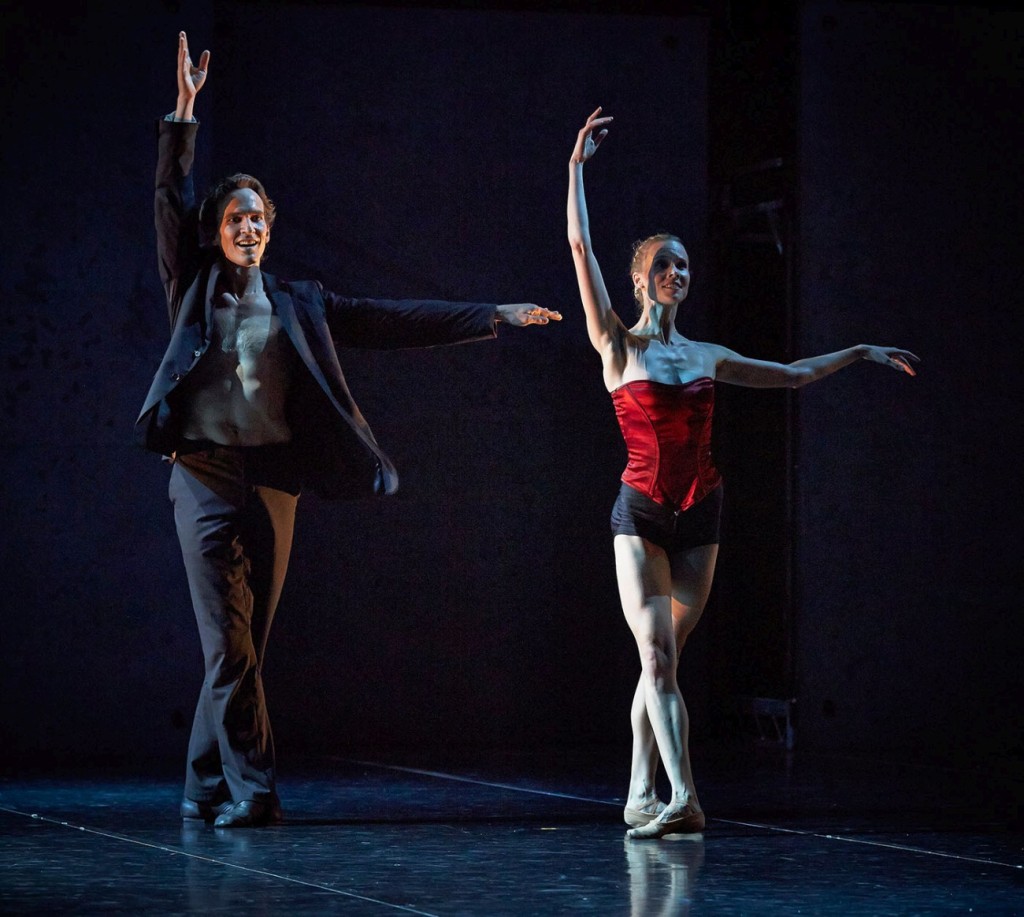 “Then, at the end of the break Michael Crabb, an expert dance critic, approached me, asking if I know Eifman. I didn’t and Crabb decided I had to meet him after the show. He sat some rows in front of me in the audience and already during the applause he turned round, waving me to accompany him on stage. I talked with Eifman’s dancers and also with Eifman. Michael Crabb stood by and suddenly turned to Eifman, suggesting ‘Maybe Jiří can take a class with your company!’ ‘I was speechless. What was going on here!?’ Eifman agreed and invited me to take the class the next Saturday at 4pm before the show. I was on the Sony Center’s stage. What was left to me but to show up?” Jelinek laughs. “On this Saturday I marched with my friends in a demonstration against Monsanto and genetically modified organisms. But I had to cut it short and quickly bike to the theater to be in time for that class.
“Then, at the end of the break Michael Crabb, an expert dance critic, approached me, asking if I know Eifman. I didn’t and Crabb decided I had to meet him after the show. He sat some rows in front of me in the audience and already during the applause he turned round, waving me to accompany him on stage. I talked with Eifman’s dancers and also with Eifman. Michael Crabb stood by and suddenly turned to Eifman, suggesting ‘Maybe Jiří can take a class with your company!’ ‘I was speechless. What was going on here!?’ Eifman agreed and invited me to take the class the next Saturday at 4pm before the show. I was on the Sony Center’s stage. What was left to me but to show up?” Jelinek laughs. “On this Saturday I marched with my friends in a demonstration against Monsanto and genetically modified organisms. But I had to cut it short and quickly bike to the theater to be in time for that class.
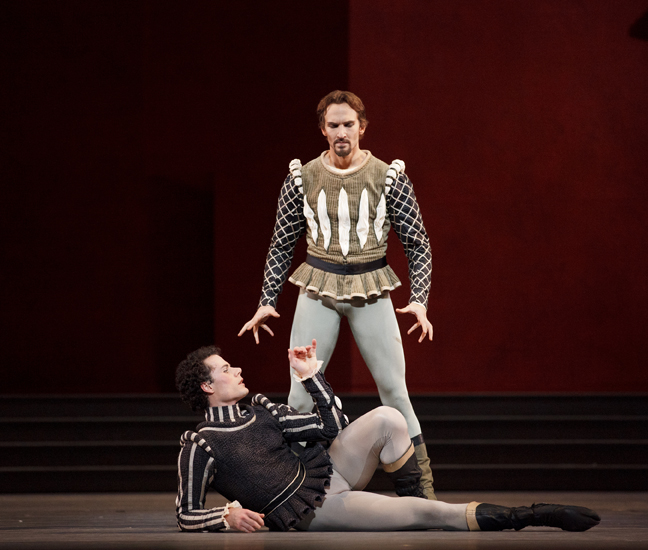 While I was warming up up on the floor at the back, dancers flocked in. Everyone approached me, introducing him- or herself, which I was quite surprised about. What a contrast to what I experienced with some people in the National Ballet of Canada. Then the ballet mistress came and urged me to stand as the first at the front barre, center stage. Good Lord, I though, what had Eifman told her? Apparently they assumed I was auditioning. But in fact I only wanted to take a class! Anyway, I did my best; I pushed it and, afterwards they indeed asked if I was interested in joining the company. But I already had signed the contract in Australia. So we agreed to stay in touch. Maybe there would be an opportunity in the future.”
While I was warming up up on the floor at the back, dancers flocked in. Everyone approached me, introducing him- or herself, which I was quite surprised about. What a contrast to what I experienced with some people in the National Ballet of Canada. Then the ballet mistress came and urged me to stand as the first at the front barre, center stage. Good Lord, I though, what had Eifman told her? Apparently they assumed I was auditioning. But in fact I only wanted to take a class! Anyway, I did my best; I pushed it and, afterwards they indeed asked if I was interested in joining the company. But I already had signed the contract in Australia. So we agreed to stay in touch. Maybe there would be an opportunity in the future.”
This opportunity came sooner than expected. When it turned out that Perth wasn’t the right place any more, Jelínek contacted Eifman. At that time Eifman’s troupe was touring London, so Jelínek and his girlfriend took a flight to audition there. “After thirty hours on the plane we were jet-lagged and bone-tired but the next day we had to audition on stage at the London Coliseum. We did a full class with the company plus one contemporary solo. We had to show up for class again the following day. At the end they took both of us.”
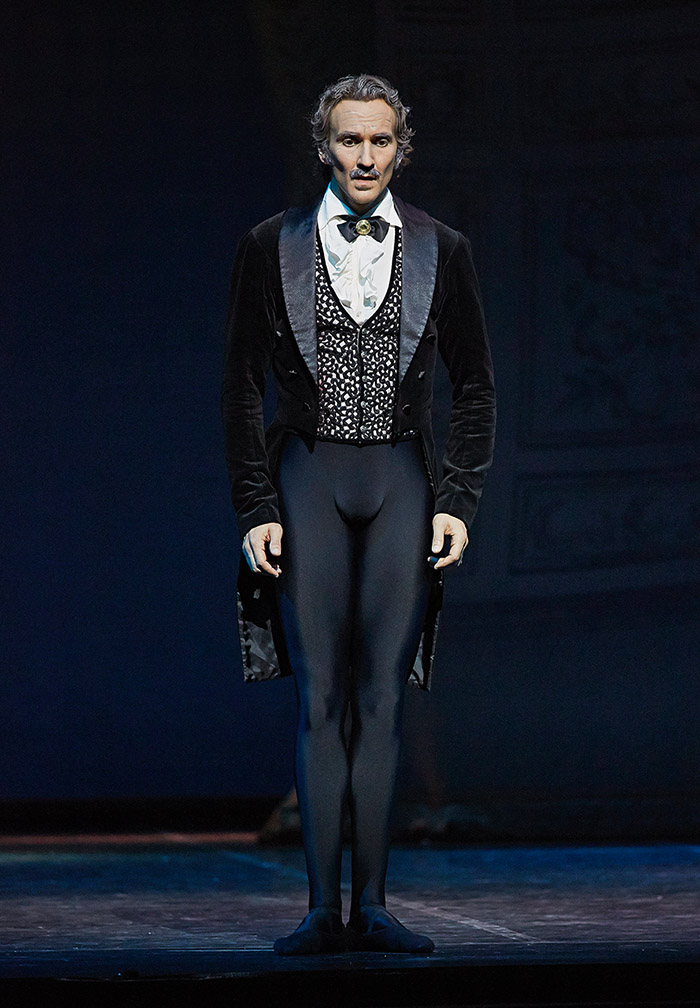
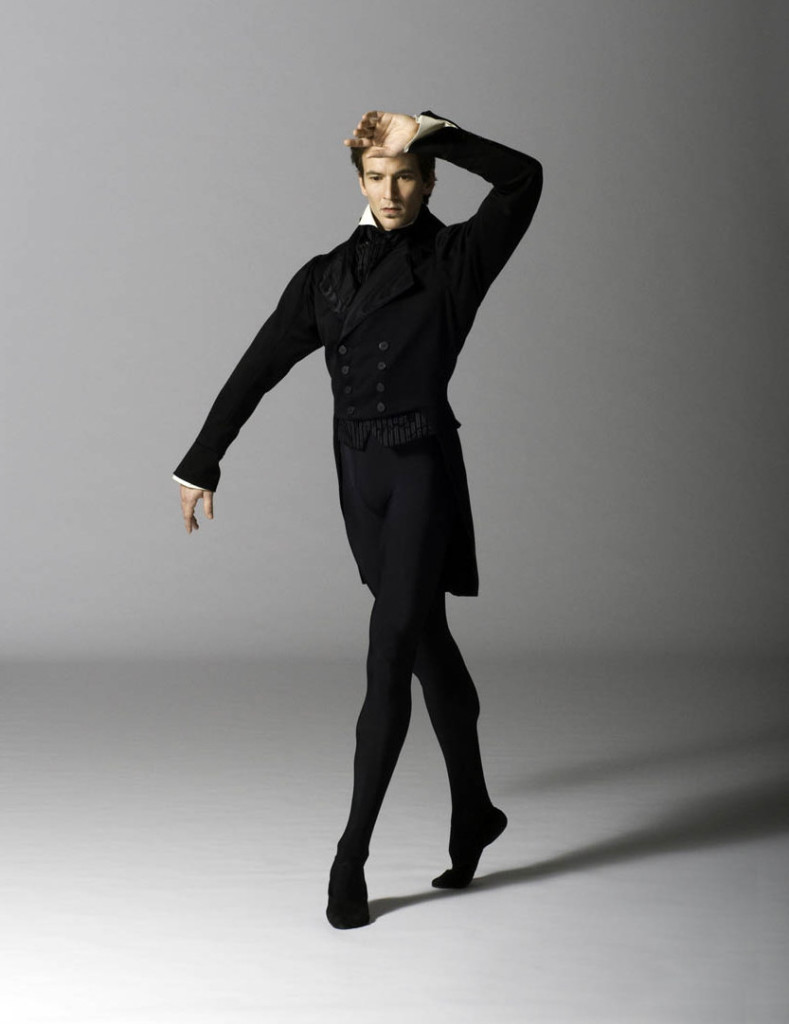 In summer 2014 the two moved to St. Petersburg and joined Eifman’s ensemble. Hard work awaited them. “They work from 11am to 10pm, every day. You effectually have dinner around or after midnight. That wasn’t exactly a pleasant routine. Yet despite this wearing schedule the atmosphere within the company was nice. I especially enjoyed touring with the company which they do a lot.”
In summer 2014 the two moved to St. Petersburg and joined Eifman’s ensemble. Hard work awaited them. “They work from 11am to 10pm, every day. You effectually have dinner around or after midnight. That wasn’t exactly a pleasant routine. Yet despite this wearing schedule the atmosphere within the company was nice. I especially enjoyed touring with the company which they do a lot.”
Also other customs took much getting used to. “Rehearsals are danced full out and always filmed, sometimes with two or even three cameras. Eifman is very specific and wants things be done exactly his way. The dancers are his tools to realize his ideas. They are not expected to contribute their creativity but to do what they are told. Moreover he works only with the first cast when creating a new ballet. I was, for example, in the first cast of his new piece ‘Up & Down’. Before the premiere we were running the whole ballet for one and a half months. Every night – imagine!”
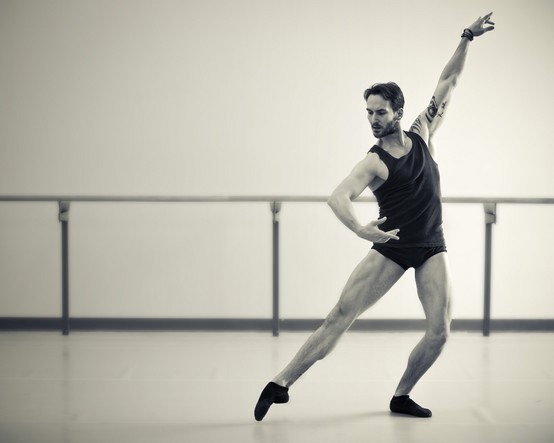 For a classical trained dancer as Jelínek, Eifman’s choreography is extreme. “’Rodin’ which I had seen in Toronto is an exception. One feels comfortable when dancing it. But usually his style effects tough physical strain. Everything is angular and danced turned-in, positions are extreme which is very difficult for a classical dancer. And there is no counterbalance. You dance nothing else except Eifman’s pieces.” Most of Eifman’s dancers grew up in his company and are totally accustomed to this style. But Jelínek wasn’t. After three or four weeks of intense work his health was affected. “I managed to perform but I was suffering, constantly seeing the doctor and the physiotherapist. Soon we realized that the Eifman Ballet wasn’t the right place for us.”
For a classical trained dancer as Jelínek, Eifman’s choreography is extreme. “’Rodin’ which I had seen in Toronto is an exception. One feels comfortable when dancing it. But usually his style effects tough physical strain. Everything is angular and danced turned-in, positions are extreme which is very difficult for a classical dancer. And there is no counterbalance. You dance nothing else except Eifman’s pieces.” Most of Eifman’s dancers grew up in his company and are totally accustomed to this style. But Jelínek wasn’t. After three or four weeks of intense work his health was affected. “I managed to perform but I was suffering, constantly seeing the doctor and the physiotherapist. Soon we realized that the Eifman Ballet wasn’t the right place for us.”
This July Jelínek finally decided to draw the consequences from his experiences. He went freelance. He and his girlfriend left St. Petersburg. She since then is dancing with the Béjart Ballet Lausanne. But Jelínek, disillusioned by his experiences, doesn’t want to permanently join any company any more. “I am thirty-eight now and I want to enjoy the last years I will be on stage. Like I did here in Gelsenkirchen with the Ballett im Revier.” He was the Death in Bridget Breiner’s “Charlotte Salomon: Death and the Painter”. It was a special role as he replaced Jonathan Ollivier, who was killed in a motorbike accident in London this August.
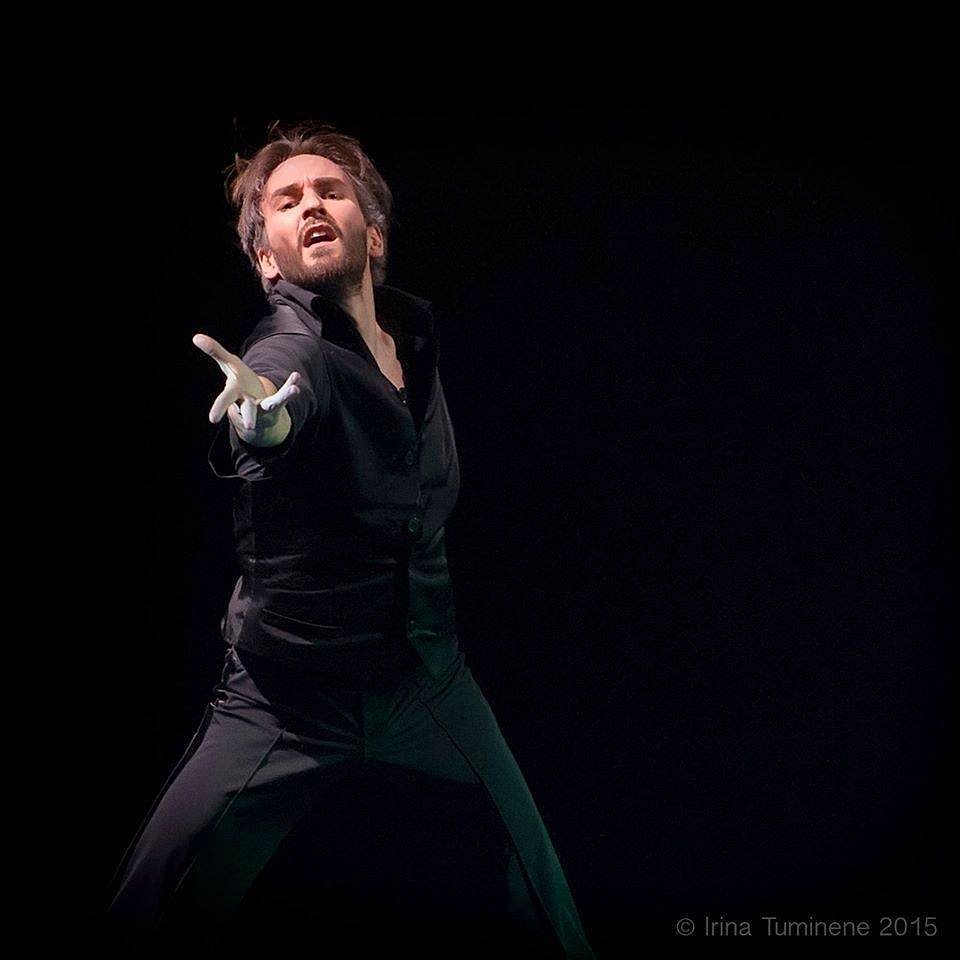 “I never met Jonathan. But when I came here I realized how important he had been for the company. How much people liked him. They really missed him. The whole energy in the company was affected, especially as the group is small, consisting of around fifteen dancers. For them it was important who would replace Jonathan.” Jelínek didn’t try to match expectations. “I was simply myself. I was genuine. And I felt totally accepted. Some even said I would be quite similar to Jonathan and that we might have been friends. We were the same age.”
“I never met Jonathan. But when I came here I realized how important he had been for the company. How much people liked him. They really missed him. The whole energy in the company was affected, especially as the group is small, consisting of around fifteen dancers. For them it was important who would replace Jonathan.” Jelínek didn’t try to match expectations. “I was simply myself. I was genuine. And I felt totally accepted. Some even said I would be quite similar to Jonathan and that we might have been friends. We were the same age.”
It is very enjoyable to listen to Jelínek. He is genuine and open. His facial expressions are vivid revealing his acting talent. One easily starts to laugh when he copies other people. While he was engrossed in talking, his coffee got cold meanwhile.
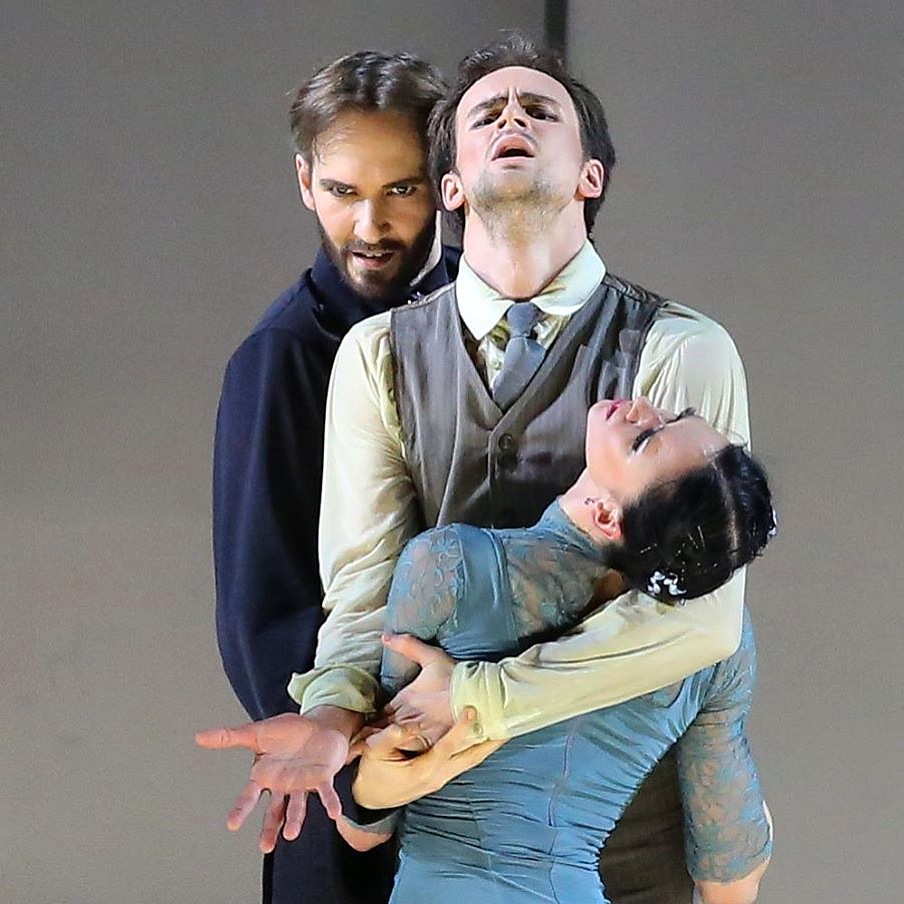 When touching on his private life, on family and children Jelínek gets pensive: “On the one hand I want to become a father one day: I want to raise my child in a good way. But on the other hand I don’t know if this world is one I want to bring a kid into. I am seriously concerned, not for me but for the next generation. I would wish that people wake up. That they open their minds and eyes and start to think instead of playing ‘the game’, instead of fighting against each other. That they look behind the scenes to find out what is really going on, politically, economically and socially. Each one is responsible.
When touching on his private life, on family and children Jelínek gets pensive: “On the one hand I want to become a father one day: I want to raise my child in a good way. But on the other hand I don’t know if this world is one I want to bring a kid into. I am seriously concerned, not for me but for the next generation. I would wish that people wake up. That they open their minds and eyes and start to think instead of playing ‘the game’, instead of fighting against each other. That they look behind the scenes to find out what is really going on, politically, economically and socially. Each one is responsible.
The topics I have in mind have global scale and an individual’s impact is naturally small but one person has to start. Things always change on the initiative of one individual. Everyone has the power to do so. It is only that people are convinced that they have no impact, no power and hence continue to be ignorant. They believe that things will be accomplished for them by others 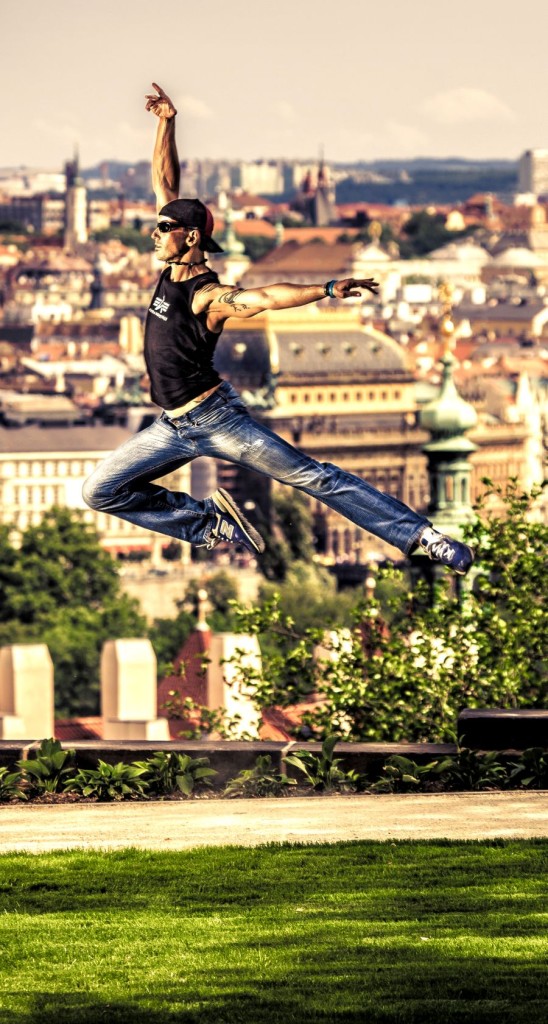 pretending to pursue the best interest. That is nonsense! Everyone can choose every day what to support, where to participate in, how to make a difference. We have to care for the future, the future of the children.
pretending to pursue the best interest. That is nonsense! Everyone can choose every day what to support, where to participate in, how to make a difference. We have to care for the future, the future of the children.
Take, for example, food. I ate a lot of meat and dairy when I was younger but then decided to become vegan. Not only because of health issues, but also because I care for the environment and animals. I know about the negative impact the meat and diary industry has on the planet. It is closely tied to pharmaceutical companies. That’s why I don’t support these products and don’t want to be the victim of them. We need neither meat nor diary to survive.”
“It is so easy to become smarter and more informed instead of wasting time with social media. I am also doing it for spiritual reasons. Everything and everyone is connected with one another. We are one consciousness, we are run through by the same love, we share one planet. One can’t grow spiritually when constantly absorbing information about death and fear. I want to take a position. I want to inspire other people to open their minds, to be more respectful, compassionate and considerate, more aware of the impact their everyday choices have. What is really going on? In which play are we involved and to what end?”
(The interview has been edited for clarity.)
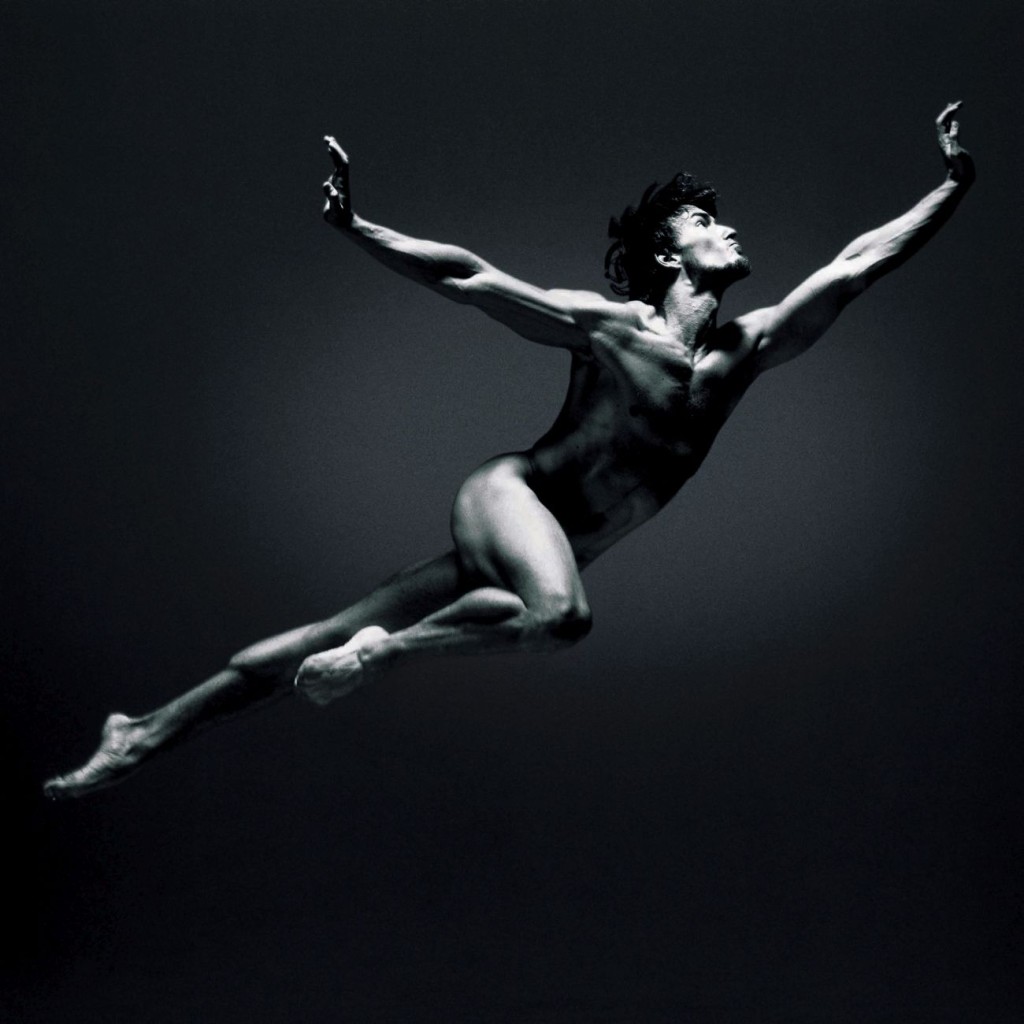
| Links: | Jiří Jelinek’s Homepage | |
| Photos: | 1. | Jiří Jelinek © Stuttgart Ballet |
| 2. | Jiří Jelinek (Armand Duval) and Bridget Breiner (Marguerite Gautier), “Lady of the Camellias” by John Neumeier, Stuttgart Ballet © Ulrich Beuttenmüller | |
| 3. | Jiří Jelinek and Sue Jin Kang, rehearsal of John Cranko’s “Onegin”, Stuttgart Ballet © Ulrich Beuttenmüller | |
| 4. | Jiří Jelinek (Onegin) and Polina Semionova (Tatiana), “Onegin” by John Cranko, Stuttgart Ballet © Ulrich Beuttenmüller | |
| 5. | Jiří Jelinek (Romeo) and Katja Wünsche (Juliet), “Romeo and Juliet” by John Cranko, Stuttgart Ballet © Ulrich Beuttenmüller | |
| 6. | Bridget Breiner (Odette) and Jiří Jelinek (Prince Siegfried), “Swan Lake” by John Cranko, Stuttgart Ballet © Bernd Weisbrod | |
| 7. | Bridget Breiner (Blanche DuBois) and Jiří Jelinek (Stanley Kowalski), “A Streetcar named Desire” by John Neumeier, Stuttgart Ballet © Bernd Weisbrod | |
| 8 | Jiří Jelinek (Jack the Ripper) and Alicia Amatriain (Lulu), “Lulu” by Christian Spuck, Stuttgart Ballet © Regina Brocke | |
| 9. | Jiří Jelinek (Petruchio), “The Taming of the Shrew” by John Cranko, Stuttgart Ballet © Ulrich Beuttenmüller | |
| 10. | Jiří Jelinek (Petruchio) and Alicia Amatriain (Katherine), “The Taming of the Shrew” by John Cranko, Stuttgart Ballet © Ulrich Beuttenmüller | |
| 11. | Jiří Jelinek rehearsing Petruchio, “The Taming of the Shrew” by John Cranko, Stuttgart Ballet © Ulrich Beuttenmüller | |
| 12. | Jiří Jelinek (Mortimer) and ensemble, “Edvard II” by David Bintley, Stuttgart Ballet © Bernd Weisbrod | |
| 13. | Guillaume Côté (Vaslav Nijinsky) and Jiří Jelinek (Sergei Diaghilev), “Nijinsky” by John Neumeier, The National Ballet of Canada © Aleks Antonijevic | |
| 14. | Jiří Jelinek (Romeo) and Brooke Jacobs (Juliet), “Radio and Juliet” by Edvard Clug, West Australian Ballet © Sergey Pevnev | |
| 15. | Jiří Jelinek (Tybalt) and Piotr Stanczyk (Mercutio), “Romeo and Juliet” by Alexei Ratmansky, The National Ballet of Canada © Bruce Zinger | |
| 16. | Jiří Jelinek (Onegin), “Onegin” by John Cranko, West Australian Ballet © Sergey Pevnev | |
| 17. | Jiří Jelinek (Onegin), studio shot of “Onegin” by John Cranko, The National Ballet of Canada © Siam Richards | |
| 18. | Jiří Jelinek rehearsing “Chroma” by Wayne McGregor, The National Ballet of Canada © Dylan Tedaldi | |
| 19. | Jiří Jelinek (Father), “Up & Down” by Boris Eifman, Eifman Ballet © Irena Tuminene | |
| 20. | Jiří Jelinek (Father), Oleg Gabyshev (Dick) and Lyubov Andreeva (Nicole), “Up & Down” by Boris Eifman, Eifman Ballet © Vladimir Sololov | |
| 21. | Jiří Jelinek © Post Production | |
| 22. | Jiří Jelinek, “Michelangelo I” by Dieter Blum, © Dieter Blum | |
| all photos by courtesy of Jiří Jelinek | ||
| Editing: | Agnes Farkas |
